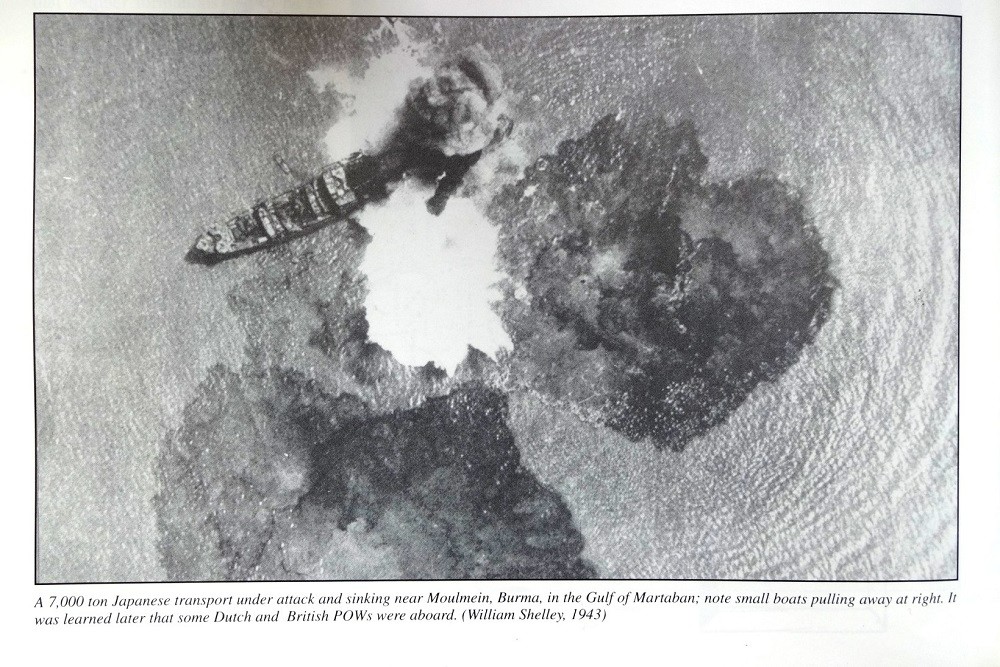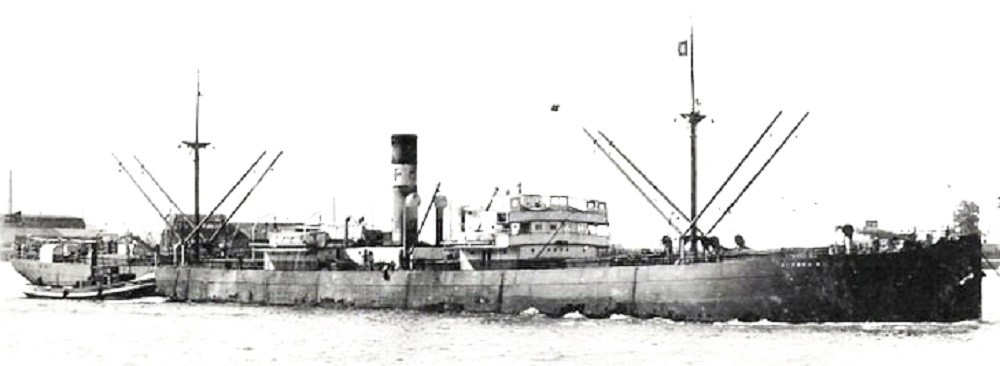Ship Wreck Nichimei Maru
On 11 Jan 1943, the Nichimei Maru departed Penang with a cargo of a locomotive and rails looted from Malaya as well a large supply of other equipment. In the forward hold were 1500 IJA Engineers. Also onboard, in the rear hold, were approximately 1000 Dutch POWs. They had been transported from Java where they were captured to Singapore in Nov 1942, but had languished there – likely for lack of available transport. All destine to work the Thai-Burma Railway.
They were in a convoy with the Moji Maru and escorted by a small gunship the Chuko Maru. Onboard the Moji were 450 US and 385 Australian POWs.
On Jan 15th, they were spotted by a flight of US B-24s flying out of India. The first plane sank the escort ship, then the second made its run on the Nichimei. The bombs entered the forward hold and the ship broke in half. Japanese accounts say only 97 were killed, but it is not clear who rescued the remainder. 75 to 100 of the Dutch were killed in the bombing or sinking, but most made it into the water.
The third plane’s bombs straddled the Moji Maru damaging it. IJA troops on the Moji fired field artillery guns that had been lashed fore and aft. The first shot hit the bridge of the ship starting a fire. The gun in the rear exploded killing the crew. Seeing the fires and thinking that they had hit the ship, all three planes turned for home. They were at the limit of their range and could not linger.
The Moji stayed in the area and rescued the Australian POWs no mention is made of the Japanese). Over-loaded and listing, the captain had all the POWs on deck move to one side to counter the list as he limped into Moulmein Harbor the next day.
Records indicate that 7 Dutch and 3 Australian POWs died from their wounds aboard the Moji and were buried in Moulmein. Post-war their remains were moved to the Commonwealth War Graves Commission cemetery in Thanbyuzayat Burma. In addition a number of the Australians and a few of the US personnel were also wounded but none were killed. The wounded included LtCol Blucher Tharp the senior officer of the US contingent. He is said to have sustained head wound for which he was hospitalized in Moulmien for about a week before joining his men on the Railway.
The Moji Maru was repaired and remained in serve throughout the Pacific until she was sunk near Saipan in June 1944. In some accounts of this incident the Nichimei is mis-identified as the Dai Nichi Maru which was a different ship.
There are two rather interesting follow-on stories. One US POW later wrote that in the confusion of the attack some of the US sailors from the USS HOUSTON discussed trying to seize the ship and sail west to freedom. They realized, however, that it was unlikely the Moji has sufficient fuel for that journey.
Also, a number of the US POWs published survivor accounts. A retired USAF Colonel read one of those books and contacted the author. He identified himself as the pilot of that third plane that narrowly missed the Moji Maru. A life-long friendship developed thereafter.
7 Dutch and 3 Australians interred in the CWGC cemetery.
Sgt 97044 CORNELIS VAN DEN HOOVEN
Soldaat 95880 HARRY VAN GILS
WO Adjudant Onderofficier 87442 NICOLAAS THOONSEN
Soldaat n/f LEON JUSTUS HENRI MEYER
Soldaat 3516 HARRY EDGAR KEASBERRY
Sgt 90428 DIRK WILLEM FREDERIK KAIJSER
Matroos-Ord SM 24706 WILLEM JACOB IMMINK
Steward 21238 ROBERT WILLIAM SMITH
Private VX48525 THOMAS REX MURPHY
Stoker 2c S5456 GEORGE HOUSTON McCREDIE
Do you have more information about this location? Inform us!
Source
- Text: Jerry Karwacki
- Photos: Jerry Karwacki






